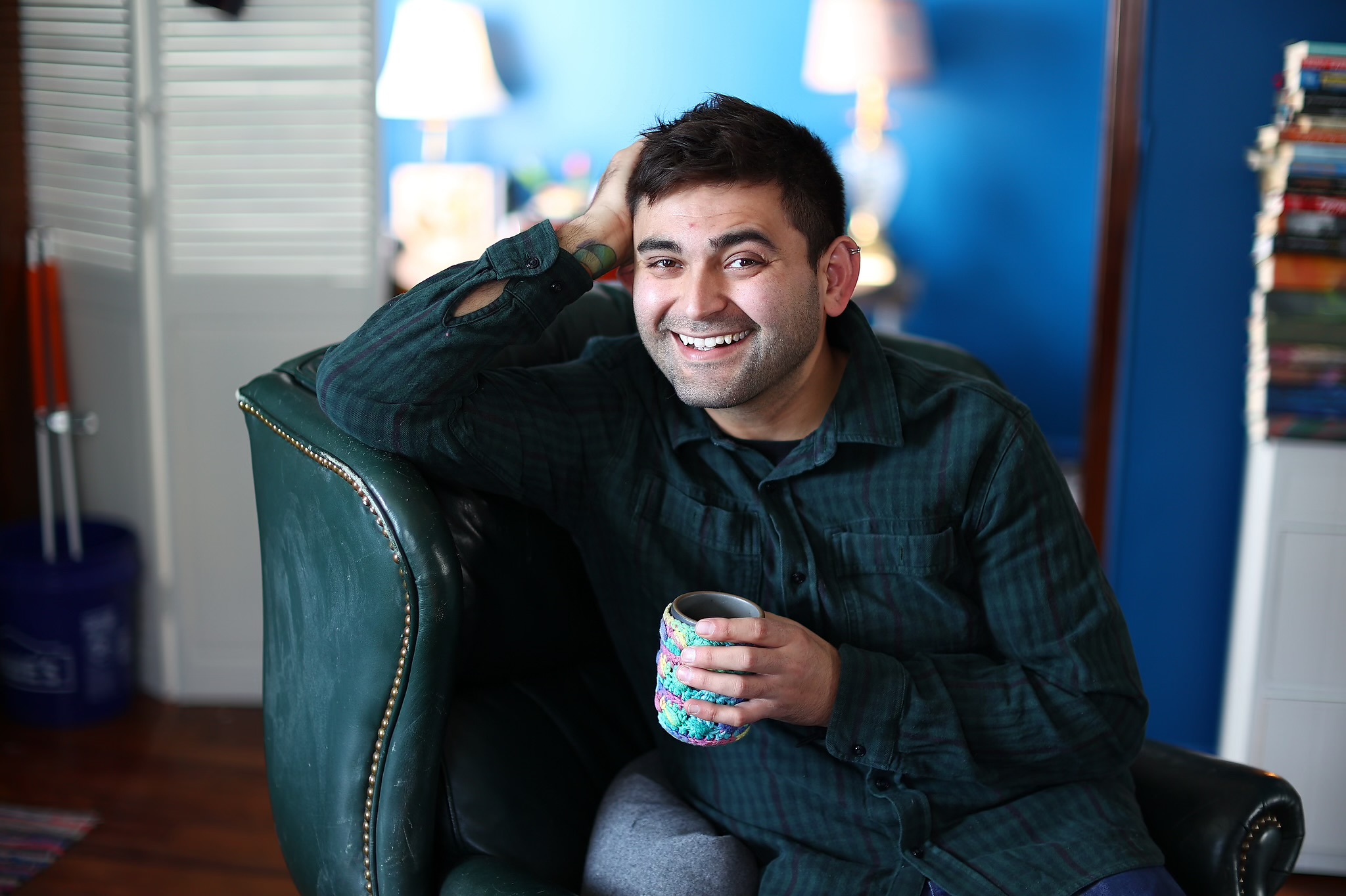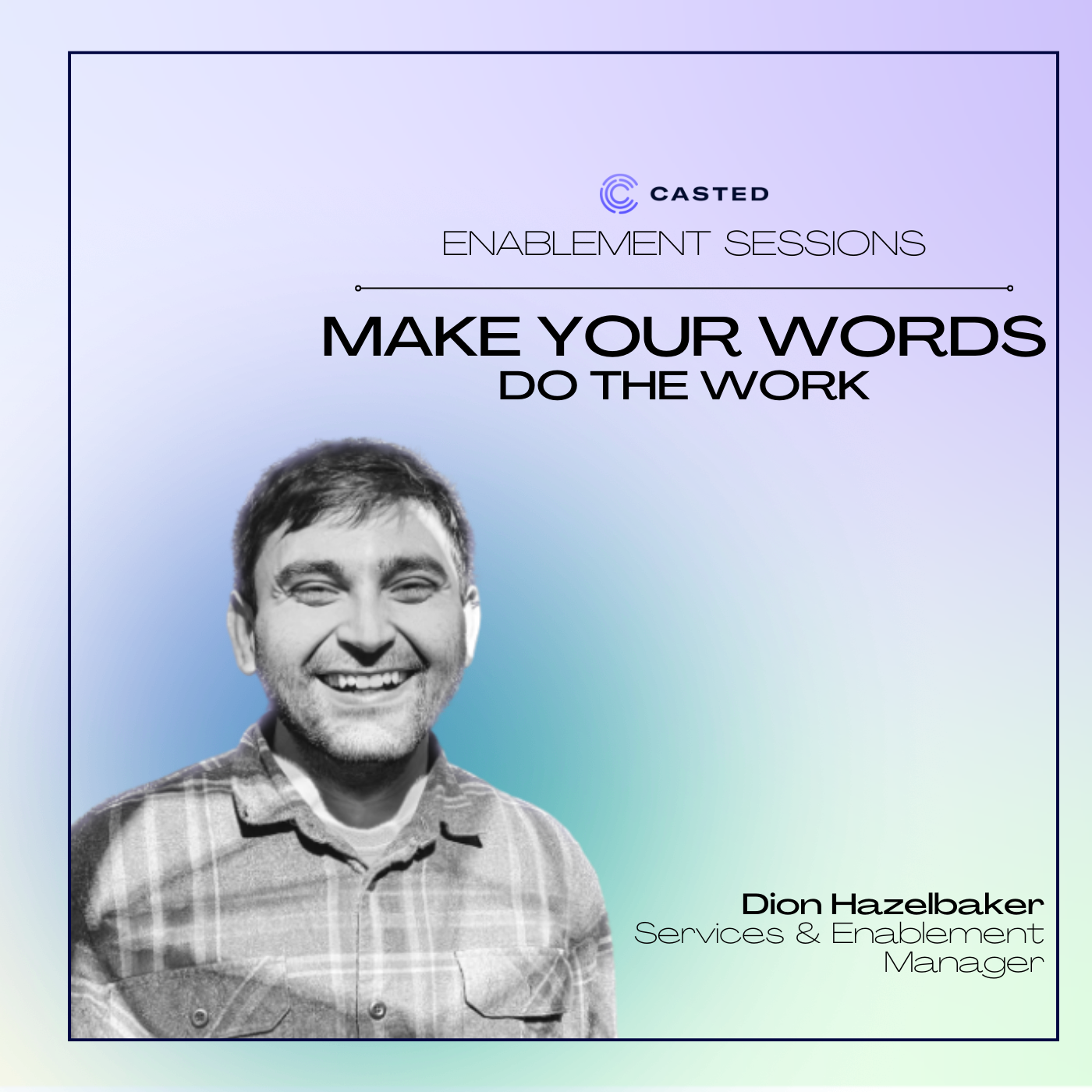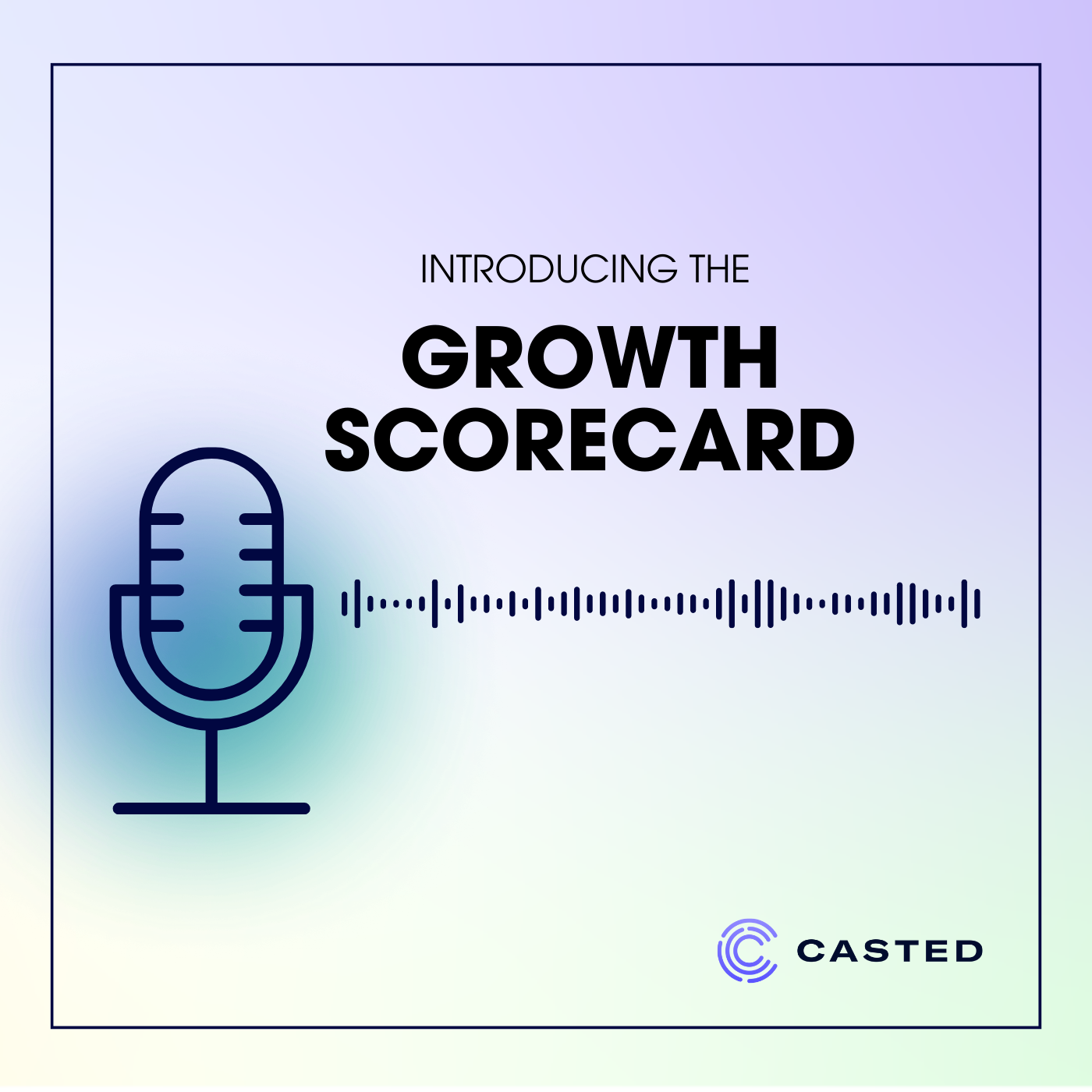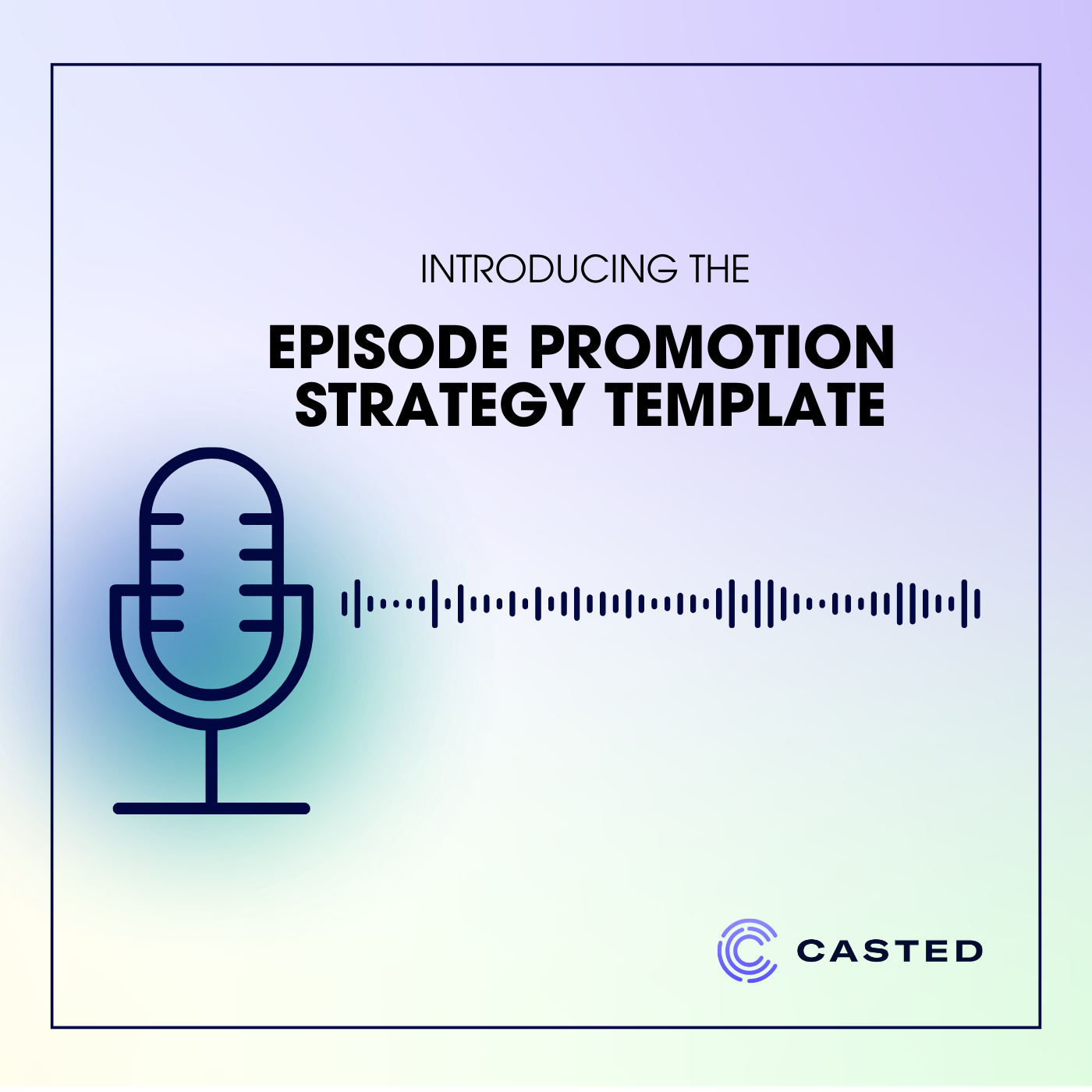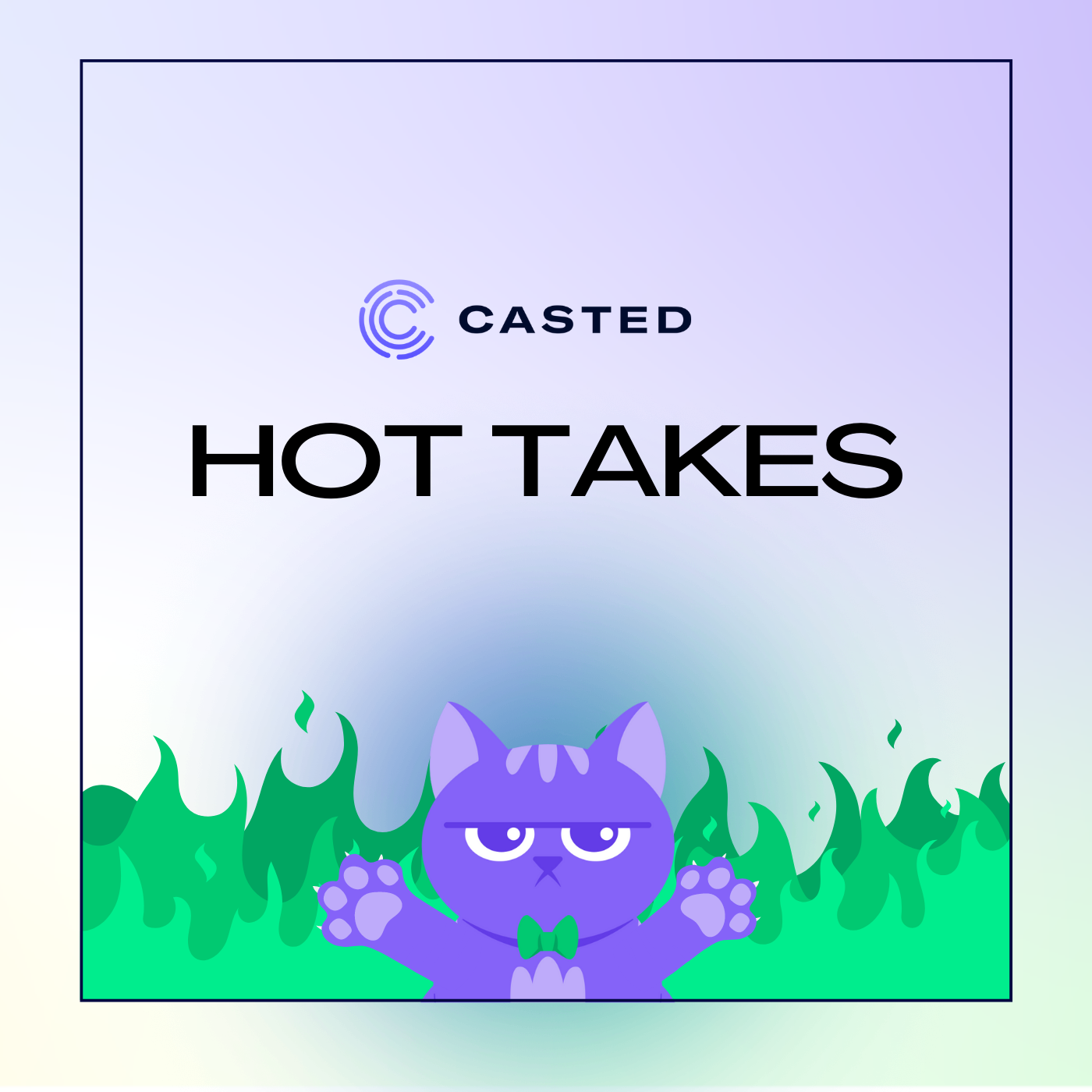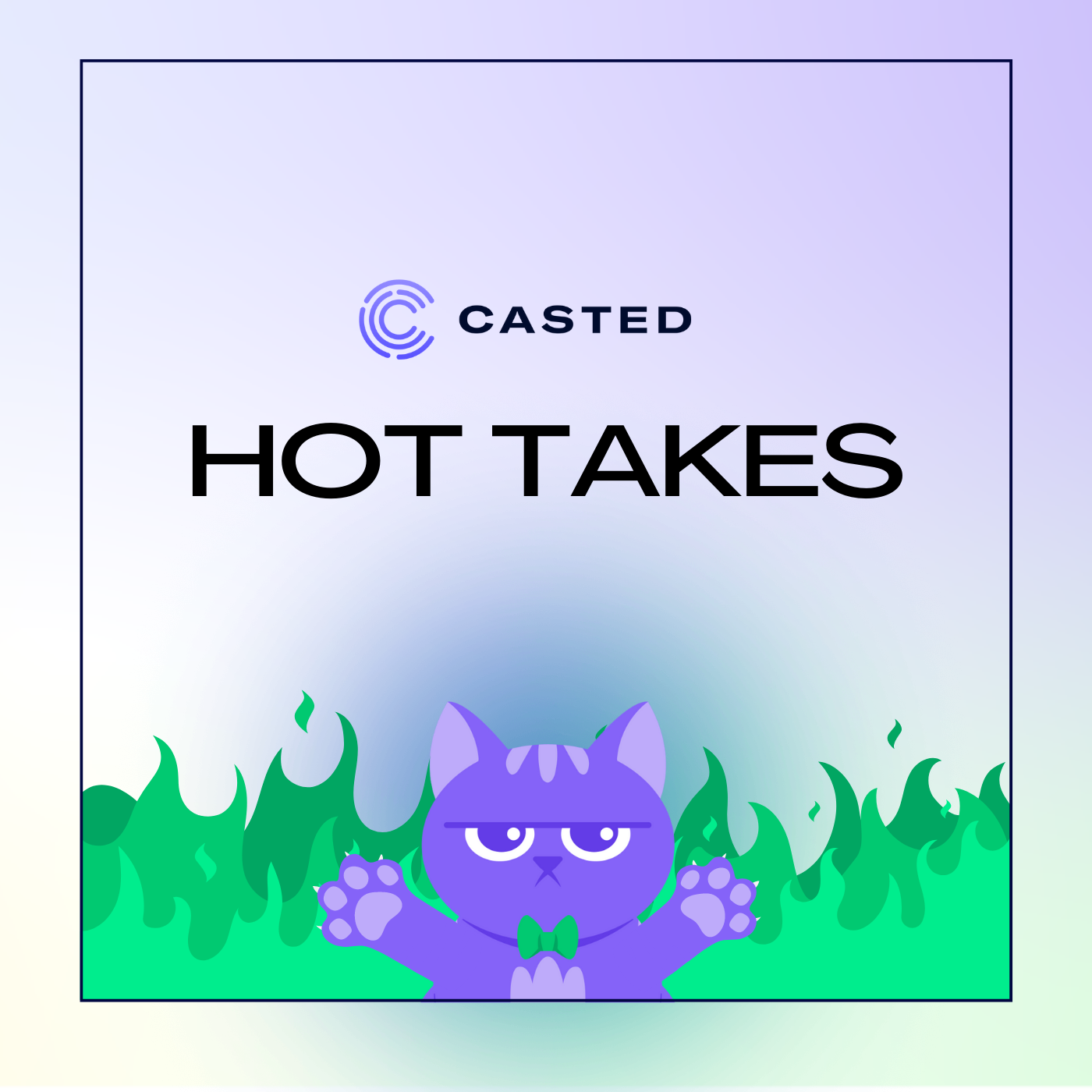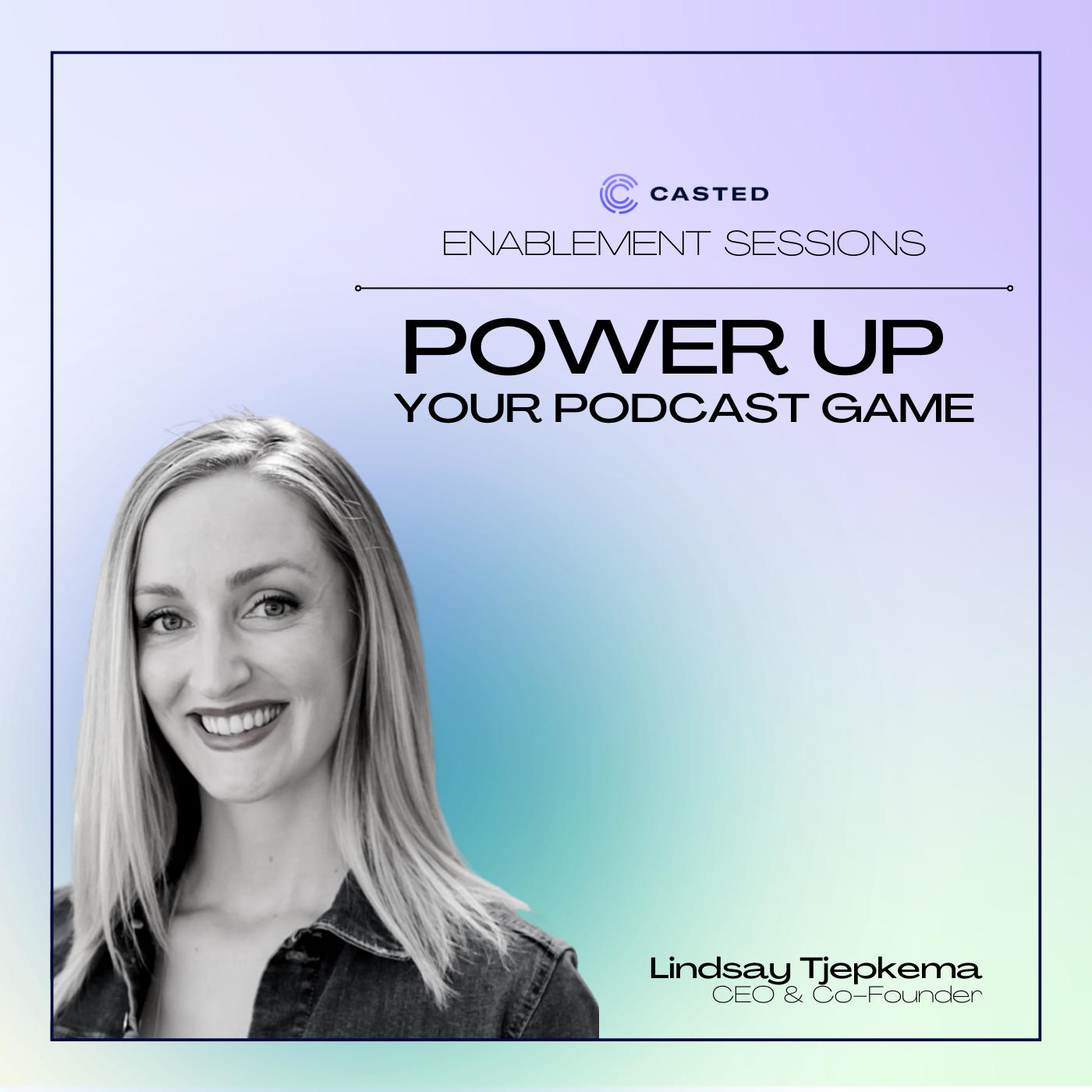Make Your Words Do The Work with Dion Hazelbaker | Enablement Session #1
- 0.5
- 1
- 1.25
- 1.5
- 1.75
- 2
Dion: Okey- dokey everybody. I'm going to go ahead and get us started. And if there are any stragglers or anything like that along the way, then we can always catch them up. So thank you for your time today and for joining me for Make Your Words Do The Work: Tips To Scale And Reach New Audiences. We have been trying to come up with a lot of really neat ideas that help our customers take more advantage of the Casted platform. And some of the simplest ways to do that are to really have a better grasp of how you're using your language and text to communicate with your audiences. So I just wanted to go ahead and put that out there, and with that we'll go ahead and get the show started. I'm Dion, and I just wanted to tell you a little bit about my background and my history. So I am an IU grad, a little ambitious for the time that I was there. I was a triple major, English literature, studio, art and journalism. And as you might imagine, those kind of immersed me in the creative arts and language and text. I like to say that I'm a word nerd and I joke around about all the humanities and know the humanities because it seems like that was a big part of my focus. So I've always had heavy concentrations in document design, sport content writing professionally. And then I got into content marketing around 2016 in addition to doing some freelance content marketing work, photography, videography, writing, craft design, the arts, that kind of stuff. I started freelancing with Casted in September of, I guess it would've been 2021. And I've been with the company ever since as one of our client services specialists. And in that role I help our customers with managed services. I help with a lot of our client and customer logistics and how we develop our managed services program. And one of our goals with this role is to help our customers take the most advantage of the platform that they can and to teach them best practices, and through the managed services that I provide, alleviate their workload by kind of handling a lot of content creation and publishing requests for their podcasts, webinars, and other audiovisual content. And sometimes I think that the words of other people work best. So I'll go ahead and play this quote from one of my customers, Abby, and I'll let my performance speak to her. So here we go.
Abby: I love that you mentioned that it would say who created it because I'm the only user of Casted from the Refinery team, but I now have Dion. I'd love to know, and I would bet money that Dion's content is going to be better received than whatever I create. Which is why I have him as a managed services person.
Dion: So we'll move on and just talk about some of today's goals and the overview and outline of this. We're going to be talking about Casted tools, writing 101, just some tips for how you can use your language and find your voice to write a little bit better. We'll be talking about key takeaways in Casted and the philosophy of amplified marketing that we follow here. And then we'll end things a little Q and A. If you have any questions right now, feel free to pop those in the chat and I will happily try to answer those at the end or throughout. Thank you, Katie, for moderating and getting those to me. Here comes the content for anybody who likes Bo Burnham and his recent special. And as far as today's goals, we want to empower you to take control of your content and get the most mileage out of it. And I also want to show you as a writer and a content marketing professional and a bunch of other creative things rolled up into one, I also want to show you that writing can be a much simpler and more accessible practice. And there's a lot of rigidity in terms of how we talk about writing in the world. And I'm here to tell you sometimes it's okay to break rules in favor of making progress and getting a good start. Nothing has to be perfect, writing wise. So we're here to guide you. And don't sweat the details. You'll get better as you continue to progress in that way. It's a muscle. And so these guys, Flight of the Conchords, they know what's up. They have some of the most experimental and silly writing if you are a fan. And I think they're a good inspiration in thinking about vulnerability and authenticity and silliness sometimes. So let's pop into Casted tools. Casted, we have so many great publishing tools and options for helping you just to expand the ways that you market your shows, that you repurpose content. And it is a really wonderful tool that when I was a content marketer primarily I think I could have made a lot of use out of. So I love this little gif of Homer here. With the right tools, you can fix anything or break anything. I think that Casted is not a rock, but it could definitely help Homer with the right things. So we're going to be talking about the overview and philosophy of the Casted episode info page and the studio and some tips and best practices when using the platform. So as you can see here in front of me, this is what the episode info page of the Casted platform looks like. You'll see a lot of your basic information, episode title, meta and search results. We're going to be focusing on the textual elements of this today, so I'm not going to get too into the other elements here, themes, segments, playlists, that type of thing.
Dion: So just identifying all the different textual inputs that you have on Casted, you've got an episode title here. You've got your meta and search results where you have another option for a title and an alternate meta description for your search results and search ranking, things like that. I'll just say, right off the bat, it normally should not be this long, but I went a little wild with it. So pardon the laugh, but again, not everything is always perfect, but it can be a great foundation to build upon for some of the other areas in the Casted platform. And thinking about the episode thumbnail and episode tags, also as text, I just want to point these out for later when we get talking more about SEO and things like that. And then a couple other areas where we can have text input in Casted platform. We've got episode descriptions, show notes, social card description, episode guest descriptions, resource areas. You might be thinking, what is the difference between an episode description, show notes and social card description. These are all areas that are customized to the specific outlet that you would like to see that information. The episode description, as you can see here, shows up in your RSS feed. So for Apple Podcasts and Spotify, I always like to joke around about Pocket Casts, which is another third- party RSS player. And I say that I use Pocket Casts because I'm a man of culture. They just make amazing tools, so this is my shout- out to Automattic, that makes Pocket Casts and owns them. So show notes. This what's going to show up on your Casted landing page. When you have an account with us, and you're releasing content, you have the option of a custom landing page, and the information that is written here will populate there. So it's really nice too because you have a social card description. So for instance, whatever you write in here, if you share a link to your episode on social, it'll prepopulate with the social card description, which can save a lot of time and energy if you're trying to come up with something snappy to accentuate and highlight the episode beyond that. And these can all be customized to different lengths, and each of them has their own best practices for character limits and that kind of thing. But then moving on to the episode, episode guests, this is a great area to highlight just information about your guests that you think would help them get more traction, that would highlight them so that when someone is potentially listening to your content, that they are that much more interested and hooked. And then resources for anything that you would like to share and get a little more traction on there as well. That's a good spot to be. And oh, apologies for the blurry screenshots here. I just wanted to show a couple of examples of how sometimes this can be used. And I think I have another slide later on where I'll probably flash back to this just to talk about a little bit more. But this is a buyer of our OpenView, who they have amazing content, and their show BUILD with Blake and PLG 123 are just really great at how they take advantage and creatively use our fields. So for instance, they have a template set up so that with every one of their episodes, you get this little mission in the episode blurb, and it links to all different sorts of resources on their website. And again, these can be linked in the guest resource area here as well, separately, but it never is a bad thing to cover your bases and include it in as many places as possible when you have all of those possible customer touchpoints.
Dion: And here's another option for how some of our customers use episode descriptions. We'll see here, this is by a customer of ours, HUDDL3 Group, and they use our episode description for key takeaways from the episode, almost like thinking of it in a chapter kind of sense. So we'll get into more examples and options there. But just to talk about writing 101, the purpose of today's presentation is to show you just all the different ways that you can be playful with your content and really make the most use of it. So I think we've all had this familiar feeling of sitting down on a blank page or a blank screen and just figuring out what do I write? What do I get out of my brain? That can be really difficult when you're trying to describe and condense sometimes an hour, two- hour long podcast into something blurbable that your audience might want to read and chunk out so that they know what they're getting into. So it can be a really intimidating process, but especially, and even for those people who do it every day. But we can make it a much simpler task. And I just wanted to walk you through some tips to do that. But first, a little inspiration. If you know Neil Gaiman, he is a very prolific author, writer, Sandman, Coraline, American Gods, one of my favorite creatives. I think he always has perfect words for helping people think about writing and getting over some of the kind of stodgy rules that we've all been conditioned with. He said, " There are no rules, only can you do this with confidence? Can you do it with aplomb? Can you do it style? Can you do it with joy?" And I think especially the joy part and playfulness of this, if you can try to think about that in your writing process, in your experiments with Casted and marketing, I think that that might go a long way. And if you do experiment with that a little bit more, please reach out and let me know because I would just love to know if the tips helped. So I wanted to talk about some elements of a good headline and various tips. So the five Ws, who, what, where, why and how. I should put an H in there as well. Back in my journalism days, in my writing days for English literature papers and things like that, I think this rule served me very well, and it hopefully will serve all of you well too. It's really just a great starting point. If you're trying to figure out what do I write about, sometimes just summarizing the basic information can really help you get there. And with the mystery, we all have playful sides to ourselves, and so many of us like dad jokes and puns. When you're thinking about your content, sometimes think about that kind of thing. Think about what is curious about it? What's funny about it? What connects with people, connects with human checking it out? And in that same sense, novelty. What's new? What's exciting? What really jumps out to you about this piece of content that you're trying to put out into the world? Talk about that aspect of it, and try to come up with as many different brainstorming sessions for titles and things like that as you can. Just word vomit essentially onto the page, and I'm sure something will come out that could be useful. So another kind of ground rule, appealing to positive human tendencies. I think we're almost upon the era where we're about to see so much more positive news and kindness. And I think with headlines especially, that always brightens someone's day. So if you can do that, that's going to increase someone's loyalty, someone's affection towards your brand, towards your content, and that's probably a good place to be. So we'll talk about newsroom practices and style guides. That's one of the elements I talk about when I talk about writing that kind of pulled a lot of people back. We all grew up Chicago style or AP style or all the millions of different options there are out there. And sometimes it puts you in a corner or puts you in a box. And I think one of my best pieces of advice is to think about that in the sense that... experiment, make mistakes, and that's the only way that we get better, especially with writing. And lastly, elements of a good headline. And again, this is not a comprehensive list or anything, just some things that pop into my brain when I think about good writing. But think about length and brevity. Sometimes brevity is great. Sometimes it's exactly what you need to hook someone. Sometimes the length of a story, of crafting a story, though, can be just as effective. So don't think about it in the sense of you always have to have something short. Sometimes experimenting with the form going longer is not a bad thing. So we're going to talk about key takeaways now. Key takeaways are an aspect of the Casted studio where you can go through essentially what is almost like a Google Doc, and when you highlight text, it turns that into a key takeaway, which you can then export as a video, an animation, all sorts of neat little things that can help you market your show. I just realized this audio isn't going to play for you folks, but fortunately we do have transcripts on. So I'm going to play it still, and it'll talk a little bit about managing transcript and clip creation, which is the foundation for key takeaways in Casted.
Katie: The benefit of key takeaways is that your audience can come in, they could look at this piece of content and say, " I don't have 22 minutes, but I really want to learn about these things." And they can look at these clips on the right- hand side and they can quickly go through and at least listen to the highlights there because they know they've got 30 seconds worth of a clip here that they could listen to. And when they click play, it jumps right to that moment within the piece of content. So key takeaways are a really wonderful way for you to almost turn your content into chapters and to additionally highlight what I like to call the hero quotes, those things that once you hear them, they just resonate with you. You can't get that out of your head. Those kind of moments have happened in so many podcasts and webinar conversations and meetings, to be frank. They happen everywhere, but sometimes we don't always have the ability to record them or to make the most out of them, especially if we're launching an hour- long podcast, and that was only in a 45- second clip or a segment from the conversation..
Dion: So the anatomy of a great takeaway, this is another one of those things where length can sometimes vary. But the anatomy of a great takeaway, especially for social media or for your website and things like that, you want to keep these things brief. Something that's 30 seconds to a minute, maybe even shorter. You want them to be powerful and succinct. Is it a quote coming from executive or a stakeholder or someone who is just really an advocate for the conversation or the product or the thing that you're trying to put out into the world? I think a great takeaway, it offers some curiosity into the world. You view the title, you view the content, and you're kind of hooked by the wonder of whatever they're trying to talk about. And lastly, it's informative, especially with the title. You want to create key takeaway titles that allow someone to almost think of that short snippet as a window into the entire episode. That way, they hear that section and they're like, " Whoa, I've got to go back." You'll hear that in a lot of major top- 100 podcasts and things like that on RSS feeds. A lot of those publishers will kind of do a takeaway right at the beginning of their episode as a highlight, and that will have a huge effect on listenership. Because if they're being greeted with a hero quote at the very beginning of the show, then it increases the likelihood that they're going to stick around. And then in terms of writing a good headline for a takeaway also, reread the passage, and if you're struggling with the words, I think it's always really a great idea to listen to what the speaker is saying. And sometimes they have the exact words you need. You just have to listen close enough to hear it. And one last takeaway, some of these can be longer. And I do encourage our customers to think about key takeaways almost like chapters so that you can go through, have a larger understanding of your conversation, and then you can use that as a skeleton to go through. And you're like, " All right, well here are the five main points of this conversation, and here are the 20 nuggets of awesome conversation within that." So let's move on to SEO. When we think about SEO, sometimes it's, again, we need to encourage a closer reading and listening of what we're trying to write about so that we can use those words that are provided to us by the client, by the brand in the conversation, those kind of things. And when you're trying to think about SEO, some of the tips that have helped me the most in my life were just coming up with everything and, one, going down the Google rabbit hole for the subject that you are currently talking about, writing about, brainstorming with word clouds. I joke around that it's just the word vomiting on a page again and picking out the most important word as tags, hashtags for Google and for social. The better and more accurate your tags are for meta and SEO results, the better your search ranking is going to be on Google results. So it really does pay to take a considerate approach to SEO. And then also thinking about it in the social media lens with hashtags and SEO in that sense, it can really help with the discovery of your show, of your platform, of your product if you are taking into consideration of these keywords and using them in the right places, whether that's LinkedIn, Instagram, TikTok, or your website for Google to scrape and crawl. So I'm going to walk through now just how a couple of our customers think about show notes. So Zylo here, they're a SaaS management and optimization company that helps you save time, money, and energy with your company software and to collaborate better and optimize that aspect of your business. HUDDL3 is an innovation, teamwork, and a management support organization that helps companies really revitalize and find new paths forward with their business. And then OpenView is a venture capital company with a lot of great podcasts and a lot of great portfolio companies, and they're focused on funding companies that improve people's working lives. So a lot of the SaaS that people use is backed by them too. So this is what it looks like for some of these customers when we're looking at their show notes and things like that when you're on an actual podcast player. Again, this is Pocket Casts. I know everybody has their individual preference, so it might look slightly different if you're using Apple Podcasts or Spotify or things like that. But as you can see over here, this is OpenView for Ryan Carlson. This is just a great template that they're working on, and I think that has been very effective for them, for gaining audience interest and for just exploration. And so here's the Future of Teamwork, the HUDDL3 podcast. We've got just our general description of the show and key takeaways. And then I wanted to talk about some external examples and effective strategies too. These are just some podcasts that I listen to and how they use this section of their episode description and show notes and things like that. So some customers use it in a very informative way. Here's what's going on in our community, sign up for your membership, to be a really good way to help encourage the monetization of whatever product you're trying to put up into the world. You can deep link there and have actual proof of where that monetization and subscription and income is coming from. Some podcasts are very basic with it, and they think of it almost mostly just in narratives like this as in This American Life. So no deep linking, no timestamps, nothing like that. We just want to help people with our words. And then over here we have Death, Sex& Money. They have an interview where they link to different resources, movies, and the filmmakers portfolio, and they also do a mix of just describing what the show is about. And lastly, I think a great example of a show that really takes advantage of show notes, Radiolab, one of the kings in the podcasting world. They have been in it for a long time, and they use their description to such great effect. We've got links to different videos, links to different books. We've got contact information, follow us on Twitter. It can be a great way to encourage your audience to follow you and interact with you elsewhere beyond just the audio or video that you release. So let's move on to the best practices for writing episode info and metadata. In Casted, you want to fill out the SEO and meta fields to the best that you can. It might take a little while to get in the groove with it, but as you start to continue to do that and see those search results when you're searching for it or when you're checking out the Casted metrics and seeing that this is having an effect, it really does help. So try to make it a consideration for your business, for your writing, whether it's on Casted or anywhere. It really helps. And with audience persuasions, sometimes entering in this text can be all the difference in terms of whether someone listens to your show. If they see a good hook in your title and they're like, " Oh man, I really love that. You know what, I do want to know what's going on with sharks and lasers down on the bottom of the ocean and internet cable." So they're like, " That's a tricky headline. I got to listen to that." So there's just so many different ways you can be playful and that can have a great effect on persuasion. You can also use it in the sense of offering calls to action. So you want your customer, your potential customer, this loyalist, to do something for you. Link to it. Hey, take the survey here. Take the survey and get a coupon, or fill this out for us, or subscribe to our newsletter. There's so many different possibilities there. And then for description and show notes, that's a pretty self- explanatory one. You want to include a description in show notes because it's one of the best ways to help in the discoverability of your podcast. If you're going to the podcast player of your choice, as a podcast user, and you show that doesn't have any text baked into it or fleshed out, then you're probably going to have less likelihood of wanting to engage with that. So just a good rule of thumb is to try to include as much of this and fill it out as possible, whenever possible. Use the guest introduction, the description, or in the guest resources. Use the guest introduction and summarize the episode in your writing. That can sometimes be one of the best places to start. And even if it doesn't evolve beyond a start, it can still end up being a really successful and effective way to get people into the show. So definitely add additional resources or a show notes template as well. I think that's something that as you release content into the world, you're going to have different resources that you work out that you always want to have included with your show. So just think about it in terms of how that could be a strategic win with what you share. And then with key takeaways and tags, key takeaways are just wonderful for so many reasons, for how to help refresh your content and help people navigate it. So I highly encourage you to take advantage of that. And the nice thing about key takeaways after you've gone through and done the difficult work of finding them, reading them, rereading them, naming them, is that you can then easily turn it into very usable content. We just refreshed a lot of our audiogram and videogram options. So for any of our customers who, previous or forthcoming, you have so many different stock templates that look great that you can use and turn your key takeaways into and it'll only take a minute. And tags, that can just really help your SEO and discoverability. And beyond that, tags in Casted have a dual purpose of helping to group them for content. We can talk about themes and playlists and segments and things like that during another presentation, but tags definitely play into that as well. And in the messiness and chaos of content marketing, a little organization is really wonderful, and tags can help bring that. And then lastly, deep linking, that is going to be such an effective way for you to get results, to see the footprint of where your audience is listening, where they're going. So always take into consideration the more you can link, the more you can offer resources to your listeners because they're going to appreciate it more often than not. So I want to talk about amplified marketing here too. Amplified marketing is a philosophy we follow at Casted to help our customers and to help us make our content marketing lives easier to ease up the load on our marketing team and to be strategic with the stakeholders and the experts who really have the voice and the authority to get that message out there. I'm going to go ahead and play this, and hopefully the text works.
Katie: One of the many benefits of Casted is being able to easily amplify your content over and over again. When we say amplify, that doesn't mean sharing once or twice and then moving along. It means continually going back to that content and finding new creative ways to put it out there in the world so you get the most mileage possible out of it.
Dion: Katie does a great job of summarizing amplified marketing and why it's such a effective and important area of focus for us. But with this idea of amplified marketing, reuse, recycle, repurpose, the benefit to your team is that it creates less stress on your marketing team to generate brand new ideas. You can go through your old catalog and rediscover what content works, what doesn't, on social especially. And it gives you the option to experiment. You know, can repackage your podcast or audio- video content or webinars or any live events that you recorded. You can repackage that content with a new look to get more mileage out of it. Sometimes we are very visual creatures. How many times do you pick up a book in terms of the cover? It's the same thing with videos and audio online, where sometimes you're drawn to a really good design. So if you can think about how you repackage that content, I think that'll go a long way. And again, with the focus of writing, it gives you the ability to reframe and to reword the messaging for that content almost endlessly so that you can continue to generate videos quickly, share them on social, to share them in email newsletters, on your website, wherever. And the viewers aren't necessarily going to know from that title or from the beginning... Because you can always go through and add more options is what I was trying to say. So kind of closing down here and getting to the end, amplified marketing and some of these tips can really make your marketers lives like this, like this cute little cat here, who is a boss, and not like this, where you want to smash your computer and be Mark Wahlberg, I guess. So we're going to go to the next steps and takeaways. When it comes to writing, be playful, be experimental. We can all have a lot of self- doubt and be our worst critic sometimes. And it's really helpful in writing, I found after 20 plus years of doing this myself, to just be playful and to have fun with it. And then another takeaway from today, implement an SEO strategy and start small. You don't have to have it be super comprehensive for it to be effective. So make sure that as you're going through on Casted, make sure as you're going through your marketing, you're really delving in with a close eye and ear and picking apart those words that could really help you gain and reach new audiences. And then head links, resources and episode highlights, the show notes. Again, just to stress that. It can help so much with people discovering your show and finding interest in it. Be weird. Just resonate with those people who are listening to you, and I'm sure that they'll appreciate that vulnerability, that realness. And then leverage your content, amplify it, and focus on your strategy. I would imagine almost every organization has some existing content that they would like to get more use out of and free up time for their employees to be more strategic, for them to focus on longer term issues and to be more proactive rather than reactive. This is a tool that can really help you do that, and experiment with it in a way that can help you find a lot of success. Thank you for joining us today. If you have any questions, comments, feedback, please check with me at Dion. Hazelbaker @ casted. us. Reach out to me on LinkedIn, wherever you would like to, and I'm happy to help however I can.
DESCRIPTION
Put the kettle on... because we're spilling the tea on how to optimize your content details to make a BIG impact. We'll be talking about:
⭐️ How to write eye-catching titles and episode descriptions
⭐️ Finding the balance between authenticity and great SEO
⭐️ Quickly identifying key takeaways that will resonate with your audience
⭐️ Tea-ing (get it?) your content up for simple and effective amplification
⭐️ Applying this methodology across all of your marketing efforts
Today's Guests
